The Great Fire of 1869

The extent and consequences of the most devastating natural disaster to hit the Southern Cape in the 19th Century.
Early European explorers knew the Southern Cape as ‘the land of smoke and fire.’ Although they seldom landed here, they saw when sailing past that fire was a regular occurrence in this region. The smoke is thought to have been from deliberate burns lit by the indigenous people of the area, probably to herd game into ambushes, or to encourage the growth of new grazing for their livestock; but it would also have come from the natural fires one would associate with the hot berg winds that often blow along this section of the coast.
According to the local newspapers, the fire that would become known as the Great Fire of 1869 was first seen on 1 February, burning in the Meiringspoort area of the Swartberg Mountains of the Klein Karoo,.
The prevailing conditions were typical of a Southern Cape berg wind: north-westerly to north-easterly winds associated with a low pressure cell that moves from west to east, parallel to the coast, often reaching gale-force strength.
By the time the fire was first seen in Knysna, the temperature was very hot. It can be assumed that the humidity was very low, and therefore that the vegetation was stressed by drought: indeed, the whole sub-continent had been in a state of drought since 1862, causing enormous numbers of sheep deaths and exacerbating an outbreak of horse sickness – all of which financially ruined the farmers in the Cape Colony, leading many to emigrate to countries like New Zealand. (The drought would lift shortly after the fire, though, as, in the nature of cut-off lows, the berg wind would later be followed by flooding, particularly in parts of the Cape.)
It should also be noted that the Great Fire occurred at a time of economic depression that would be exacerbated by the opening of the Suez Canal in late 1869, which led to a dramatic collapse of shipping on the Cape coast – a collapse that affected Knysna directly, since the village was for all practical reasons accessible for cargo only by ship until the opening of the Prince Alfred’s Pass to Uniondale in 1867, and, more importantly, of the Seven Passes Road to George in around 1883.
In the Klein Karoo, the fire was seen to spread rapidly towards Swellendam in the west and Uitenhage in the east, and through the Langkloof (the valley north of the Outeniqua Mountains). It then quickly spread down towards the coast to Great Brak River, east of Mossel Bay, and then on to Victoria Bay, Knysna, and Plettenberg Bay.
Henry Barrington and the Great Fire of 1869
The area affected by the Great Fire of 1869 was only sparsely populated, and there were therefore not many diarists or officials present to record its effects. Most of what we know about the fires comes from a report in the George Advertiser dated 16 February 1869, from a letter written by Bryan Darnell, owner of the Farm Westford (now Charlesford) on the Phantom Pass road, and from the diaries of Henry Barrington, the owner of Portland, near Rheenendal, north east of Knysna.
Barrington’s writings have been preserved and transcribed both by his granddaughter, Katharine Newdigate (Honey, Silk and Cider), and her nephew, James Newdigate (The Portland People). Barrington's diary provides perhaps the best-known record of the fire as it affected Knysna.
Barrington is often accused of starting the fire, but this, argues James Newdigate, is impossible.
Although the fires had been seen in the Klein Karoo a week before, the first fires in the Outeniqua Mountains were recorded on the 7th of February, by coincidence the same date on which Barrington burned a section of his lands – perhaps as a firebreak, although this is not recorded in his diaries. The lands he burned were all within view of his newly built house.
Then on the 8th, Barrington travelled to the village of Knysna (then called Melville, 20 km via the Phantom Pass from Portland) on court business, returning the same day.
Newdigate contends that a man of Barrington’s careful nature would never have left his farm if he knew that parts of it were still alight, which means that he would have been surprised to see smoke on the following day – the 9th. This smoke came from a place five or six kilometres north of Portland, and was separated from Portland (and its burned lands) by a strip of ‘wet’ forest at least two- to three kilometres wide that grew on the neighbouring Lawnwood Farm. (Wet forest = multi-species, indigenous, fire-resistant, evergreen Knysna forest.)
Barrington wrote on the 10th: “about 11 am (on the 9th) it got into the river Knysna to my NE, it quickly passed down the valley & fired my thatch land, it passed down & destroyed Westford house & every hook of Portland was on fire & all to my West. The fire got into my river kloof a little to my SW & was burning towards my house backward against wind – at this moment it seems the village of Melville was in imminent peril when fortunately for it the wind turned due W. This tho' was fatal to me….
“My God, to what a state we are now reduced. My poor wife, myself, my 3 sons & my 4 dear daughters.”
And later: “…I have lost the labour & collections of a life, all my nice library but a dozen odd volumes. 15 pigs 1 poor dog & 2 ducks…”
With everything on Portland burned – house, cottages, farm buildings – the very nature of the property seemed to have changed. “One might as well be on the barest Karoo place as on the beautiful banks of the Knysna river. The grass will grow again and soon the whole farm will be one sheet of emerald green, but all that gave it value in my eyes is gone.
“Nature never can restore grand old trees, not a few of them 30 feet in circumference, that stood on a great haugh on the side of the river opposite my house. I took a walk along the river banks: plenty of bush-buck roasted alive, and I daresay an elephant or two, but not a sign of life but an old baboon crooning over the desolation, and not a sound but the crashing of trees as they fall hissing into the water.'
“I have lost everything.”
Although it spread through Portland with terrifying speed, the Great Fire of 1869 burned elsewhere for weeks, razing dozens of homesteads to the ground. Barrington was therefore not the only person in this position.
While rains did indeed follow the berg wind and the veld did recover relatively quickly throughout the district, the event would spur the colonial government to (limited) action to preserve the relatively small areas of indigenous forest whose timber was vital to the economy of the Cape Colony.
Forest management in the Cape Colony
The slopes of Table Mountain were wooded with forests when the first European settlers established themselves at the Cape, van Riebeeck having arrived to set up the Dutch East India Company’s station there in 1652. But, since timber was used for everything from building material to firewood, cart-making to furniture, those forests were quickly decimated and an alternate source was desperately needed.
This alternate was discovered in the Southern Cape, which boasted enormous evergreen forests, and where the Dutch East India Company established its first timber station in the region of the present-day city of George in 1876.
As far back as 1711, though, various writers had commented on the poor conditions under which woodcutters were working and living – and the indiscriminate way in which they were felling the timber. A sustained public outcry against the destruction of the forests prompted the Colonial Secretary, John Montagu, to appoint a Conservator of Forests and four rangers in 1847, and to issue a government notice that closed the forests “to prevent excessive degradations and serious injuries” – but which allowed for the sale of the forests at between five and fifteen shillings an acre.
In 1854, though, the Cape Colony was granted self-government, and the new Cape Parliament appointed a Special Commissioner – a Major Hope – to report on the timber situation in the Colony.
Hope recommended that Montagu’s decision should be reversed, the sales should be stopped, and the forests should be opened for cutting.
Following the proclamation of the Forest and Herbiage Act of 1859, control of the forests became the responsibility of local magistrates and justices of the peace, and even of local postmasters – all of whom tried to collect taxes on the timber if they could, but were inadequate to dealing with woodcutters (‘houtkappers’), timber merchants, and the government.
One such postmaster was Captain Christopher Harison (75th Foot, the Perthshire Regiment – later incorporated into the Black Watch), who, in his spare time, became the Conservator of Forests in Witelsbos near Storms River in 1856, and would become the first full-time Conservator of Forests for all Crown Forests in the George-Knysna-Tsitsikamma area in 1874.
According to Arthur Nimmo (The Knysna Story), Harison, who was, “trained as a soldier and not as a forester, was far ahead of his time in his thinking. He spoke of improving the present and providing for the future, of farming and not ‘mining’ the forests, and of cleaning, planting and enlarging rather than exploiting to extinction. He visualised continuity in perpetuity through sound management and for this purpose he proposed that the woodcutters and their appallingly wasteful practices be removed from the forests and be replaced by selected staff directed and managed by conservators.”
The destruction of the forests attracted professional attention in 1861 when the Cape Colony’s first botanist, Dr. Karl Pappe, reported that cutting was taking place at all seasons, with “much sound material left to rot.”
The ferocity of the Great Fire of 1869 – in which only the forests of the upper plateau, with its cooler, wetter climate, escaped the flames, while all other growth was destroyed – shocked the authorities into taking action, leading directly to Harison’s permanent appointment. He joined the government engineer and road builder, Thomas Bain, on a Forest Commission of Enquiry to investigate the management of Crown Forests, but they were met with some opposition: Barrington and others were calling for the forests to be “closed and sold to the highest bidder,” believing that government was failing to collect revenues from its capital asset, and that its policies were, rather, eating that asset up.
Harison – who had to contend with vacillation on the part of the government and with the wanton destruction of plant and animal life caused by the miners on the Millwood Goldfields (see ‘Gold mining: Knysna's Millwood gold fields’ on this site) – repeatedly begged the government either to throw the forests open to the woodcutters, or to take sound management and conservation seriously.
This the government finally chose to do, and in 1880 it appointed the Comte Médéric de Vasselot de Régné, a forester who had qualified at the National School of Forestry in Nancy, France, as Superintendent of Woods and Forests (a post superior to Harison’s). Whilst unable to end the destruction of the forests, de Vasselot did manage in his twelve years at the Cape to establish a Forestry Department staffed with qualified botanists, forest managers, and researchers; to institute a system of plantation forestry that, he hoped, would eventually lead to an end to the ‘mining’ of the indigenous forests (even though it introduced exotic species); and to guide the formulation of the Forest Act, 1888, which made it possible to delineate the forests, and made them inalienable.
After de Vasselot left the Cape in 1892, the system reverted to its chaotic former position, with woodcutters indiscriminately harvesting whatever they could: it was only with the passing of the Woodcutters Annuity Act of 1939 – which pensioned the woodcutters off – that the forests were finally closed altogether.
“The state-owned indigenous forests of the Southern Cape were granted a well-deserved rest,” wrote von Breitenbach (Southern Cape Forests & Trees).
“What was left... was a battlefield of devastation. It seemed best to leave the healing of the worst wounds to nature.
“In the early ‘sixties the natural recovery of the forest had progressed so far that it was deemed possible and desirable to take steps toward active rehabilitation. On the basis of intensive research and planning, a comprehensive system of natural forest conservation was developed and, in 1967, put into operation.” (1974)
The Great Fire of 1869 and the Knysna Fires of 2017
People who lived through the Knysna Fires of 2017 may be tempted to draw parallels between the two, but retired forester, Theo Stehle, cautions that, while the climatic conditions that lead to both events were similar, and while both fires burned for weeks and razed many farmsteads, this is where the similarities end.
“There was very limited agriculture in the area at that time (1869), the natural veld prevailed, there was no invader vegetation, and there were no monoculture plantations.”
There were also almost no artificial barriers, defensive breaks around farmhouses were limited (if present at all), and no fire prevention or fire suppression equipment was available.
This made the Great Fire of 1869 a very different event from the Knysna Fires of 2017: temperatures, for example, would have been lower and therefore less damaging (alien vegetation and monoculture cause hotter fire than does mixed, indigenous fynbos) – and veld recovery may therefore have been quicker.
In the end, though, both events were deeply traumatic and devastating for all the people, animals, and environments they affected.
RESOURCES
- King, N. L.” ‘The Knysna forests and the woodcutter problem,’ Journal of the South African Forestry Association, 3:1, 7-15, (1939).DOI: 10.1080/03759873.1939.9630957
- Newdigate, James: ‘The Portland People The Story of a Settler Family,’ H.J. Newdigate, Knysna, 2006
- Newdigate, Katharine: ‘Honey, Silk and Cider A Life Portrait of Henry Barrington,’ A.A. Balkema, Cape Town, 1956
- Nimmo, Arthur: ‘The Knysna Story,’ Juta & Company, Cape Town, 1976
- Stehle, Theo, (forester, retd.) Pers. comm.
- Tapson, Winifred: ‘Timber and Tides The story of Knysna and Plettenberg Bay,’ General Litho, Johannesburg, 1967
- van Wyk, J.H.: ‘Forest Policy in South Africa,’ Empire Forestry Journal Vol. 17, No. 1 (July 1938), pp. 44-50 Published by Commonwealth Forestry Association
- von Breitenbach, F.: ‘Southern Cape Forests & Trees’ - Government Printer, Pretoria, 1974
Author
This article in the series 'Our Forestry Heritage' was written for the Knysna Museum by Martin Hatchuel - July, 2022


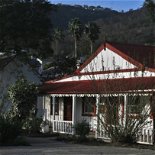


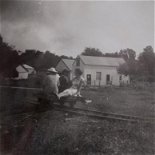


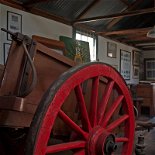
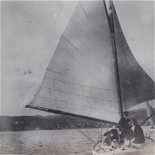



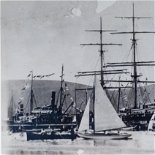

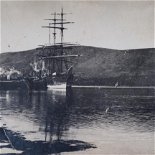


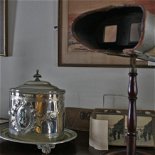
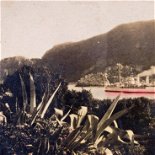
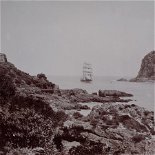
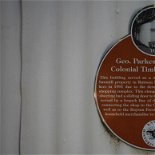
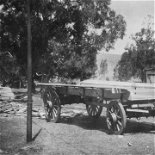
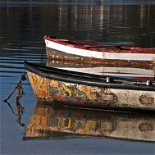

Share This Page